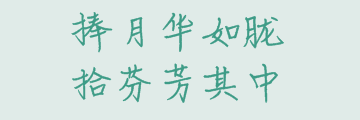[C++ STL] set使用详解
一、概述
set 容器内的元素会被自动排序,set 与 map 不同,set 中的元素即是键值又是实值,set 不允许两个元素有相同的键值。不能通过 set 的迭代器去修改 set 元素,原因是修改元素会破坏 set 组织。当对容器中的元素进行插入或者删除时,操作之前的所有迭代器在操作之后依然有效。
二、定义及初始化
使用之前必须加相应容器的头文件:
#include <set> // set属于std命名域的,因此需要通过命名限定,例如using std::set;
定义的代码如下:
set<int> a; // 定义一个int类型的集合a
// set<int> a(10); // error,未定义这种构造函数
// set<int> a(10, 1); // error,未定义这种构造函数
set<int> b(a); // 定义并用集合a初始化集合b
set<int> b(a.begin(), a.end()); // 将集合a中的所有元素作为集合b的初始值
除此之外,还可以直接使用数组来初始化向量:
int n[] = { 1, 2, 3, 4, 5 };
list<int> a(n, n + 5); // 将数组n的前5个元素作为集合a的初值
三、基本操作
3.1 容量函数
- 容器大小:
st.size(); - 容器最大容量:
st.max_size(); - 容器判空:
st.empty(); - 查找键 key 的元素个数:
st.count(key);
#include <iostream>
#include <set>
using namespace std;
int main(int argc, char* argv[])
{
set<int> st;
for (int i = 0; i<6; i++)
{
st.insert(i);
}
cout << st.size() << endl; // 输出:6
cout << st.max_size() << endl; // 输出:214748364
cout << st.count(2) << endl; // 输出:1
if (st.empty())
cout << "元素为空" << endl; // 未执行
return 0;
}
3.2 添加函数
- 在容器中插入元素:
st.insert(const T& x); - 任意位置插入一个元素:
st.insert(iterator it, const T& x);
#include <iostream>
#include <set>
using namespace std;
int main(int argc, char* argv[])
{
set<int> st;
// 在容器中插入元素
st.insert(4);
// 任意位置插入一个元素
set<int>::iterator it = st.begin();
st.insert(it, 2);
// 遍历显示
for (it = st.begin(); it != st.end(); it++)
cout << *it << " "; // 输出:2 4
cout << endl;
return 0;
}
3.3 删除函数
- 删除容器中值为 elem 的元素:
st.pop_back(const T& elem); - 删除it迭代器所指的元素:
st.erase(iterator it); - 删除区间 [first,last] 之间的所有元素:
st.erase(iterator first, iterator last); - 清空所有元素:
st.clear();
#include <iostream>
#include <set>
using namespace std;
int main(int argc, char* argv[])
{
set<int> st;
for (int i = 0; i < 8; i++)
st.insert(i);
// 删除容器中值为elem的元素
st.erase(4);
// 任意位置删除一个元素
set<int>::iterator it = st.begin();
st.erase(it);
// 删除[first,last]之间的元素
st.erase(st.begin(), ++st.begin());
// 遍历显示
for (it = st.begin(); it != st.end(); it++)
cout << *it << " "; // 输出:2 3 5 6 7
cout << endl;
// 清空所有元素
st.clear();
// 判断set是否为空
if (st.empty())
cout << "集合为空" << endl; // 输出:集合为空
return 0;
}
3.4 访问函数
- 查找键 key 是否存在,若存在,返回该键的元素的迭代器;若不存在,返回
set.end(): st.find(key);
#include <iostream>
#include <set>
using namespace std;
int main(int argc, char* argv[])
{
set<int> st;
for (int i = 0; i < 6; i++)
st.insert(i);
// 通过find(key)查找键值
set<int>::iterator it;
it = st.find(2);
cout << *it << endl; // 输出:2
return 0;
}
3.5 其他函数
- 交换两个同类型容器的元素:
swap(set&, set&);或lst.swap(set&);
#include <iostream>
#include <set>
using namespace std;
int main(int argc, char* argv[])
{
set<int> st1;
st1.insert(1);
st1.insert(2);
st1.insert(3);
set<int> st2;
st2.insert(4);
st2.insert(5);
st2.insert(6);
// 交换两个容器的元素
st1.swap(st2);
// 遍历显示
cout << "交换后的st1: ";
set<int>::iterator it;
for (it = st1.begin(); it != st1.end(); it++)
cout << *it << " "; // 输出:4 5 6
cout << endl;
// 遍历显示
cout << "交换后的st2: ";
for (it = st2.begin(); it != st2.end(); it++)
cout << *it << " "; // 输出:1 2 3
cout << endl;
return 0;
}
四、迭代器与算法
1. 迭代器
- 开始迭代器指针:
st.begin(); - 末尾迭代器指针:
st.end();// 指向最后一个元素的下一个位置 - 指向常量的开始迭代器指针:
st.cbegin();// 意思就是不能通过这个指针来修改所指的内容,但还是可以通过其他方式修改的,而且指针也是可以移动的。 - 指向常量的末尾迭代器指针:
lst.cend(); - 反向迭代器指针,指向最后一个元素:
st.rbegin(); - 反向迭代器指针,指向第一个元素的前一个元素:
st.rend(); - 返回最后一个 key<=keyElem 元素的迭代器:
st.lower_bound(keyElem); - 返回第一个 key>keyElem 元素的迭代器:
st.upper_bound(keyElem); - 返回容器中 key 与 keyElem 相等的上下限的两个迭代器,这两个迭代器被放在对组(pair)中:
st.equal_range(keyElem);
#include <iostream>
#include <set>
using namespace std;
int main(int argc, char* argv[])
{
set<int> st;
st.insert(1);
st.insert(2);
st.insert(3);
cout << *(st.begin()) << endl; // 输出:1
cout << *(--st.end()) << endl; // 输出:3
cout << *(st.cbegin()) << endl; // 输出:1
cout << *(--st.cend()) << endl; // 输出:3
cout << *(st.rbegin()) << endl; // 输出:3
cout << *(--st.rend()) << endl; // 输出:1
cout << *(st.lower_bound(2)) << endl; // 输出:2
cout << *(st.upper_bound(2)) << endl; // 输出:3
pair<set<int>::iterator, set<int>::iterator> t_pair = st.equal_range(2);
cout << *(t_pair.first) << endl; // 输出:2
cout << *(t_pair.second) << endl; // 输出:3
cout << endl;
return 0;
}
2. 算法
- 遍历元素
set<int>::iterator it;
for (it = st.begin(); it != st.end(); it++)
cout << *it << endl;
三、总结
可以看到,set 与序列式容器的用法有以下几处不同:
-
set 不支持 resize() 函数;
-
set 容器不提供下标操作符。为了通过键从 set 中获取元素,可使用 find 运算;
-
set 只能使用insert的两种重载函数插入,不支持 push_back() 和 push_front() 函数;
-
set 不支持 STL 里的 reverse 和 sort 算法;
-
set 能不通过迭代器,只通过元素值来删除该元素;
-
set 只支持默认构造函数和拷贝构造函数,没有其它重载的构造函数。






【推荐】编程新体验,更懂你的AI,立即体验豆包MarsCode编程助手
【推荐】凌霞软件回馈社区,博客园 & 1Panel & Halo 联合会员上线
【推荐】抖音旗下AI助手豆包,你的智能百科全书,全免费不限次数
【推荐】博客园社区专享云产品让利特惠,阿里云新客6.5折上折
【推荐】轻量又高性能的 SSH 工具 IShell:AI 加持,快人一步
· [.NET]调用本地 Deepseek 模型
· 一个费力不讨好的项目,让我损失了近一半的绩效!
· .NET Core 托管堆内存泄露/CPU异常的常见思路
· PostgreSQL 和 SQL Server 在统计信息维护中的关键差异
· C++代码改造为UTF-8编码问题的总结
· 一个费力不讨好的项目,让我损失了近一半的绩效!
· 实操Deepseek接入个人知识库
· CSnakes vs Python.NET:高效嵌入与灵活互通的跨语言方案对比
· 【.NET】调用本地 Deepseek 模型
· Plotly.NET 一个为 .NET 打造的强大开源交互式图表库